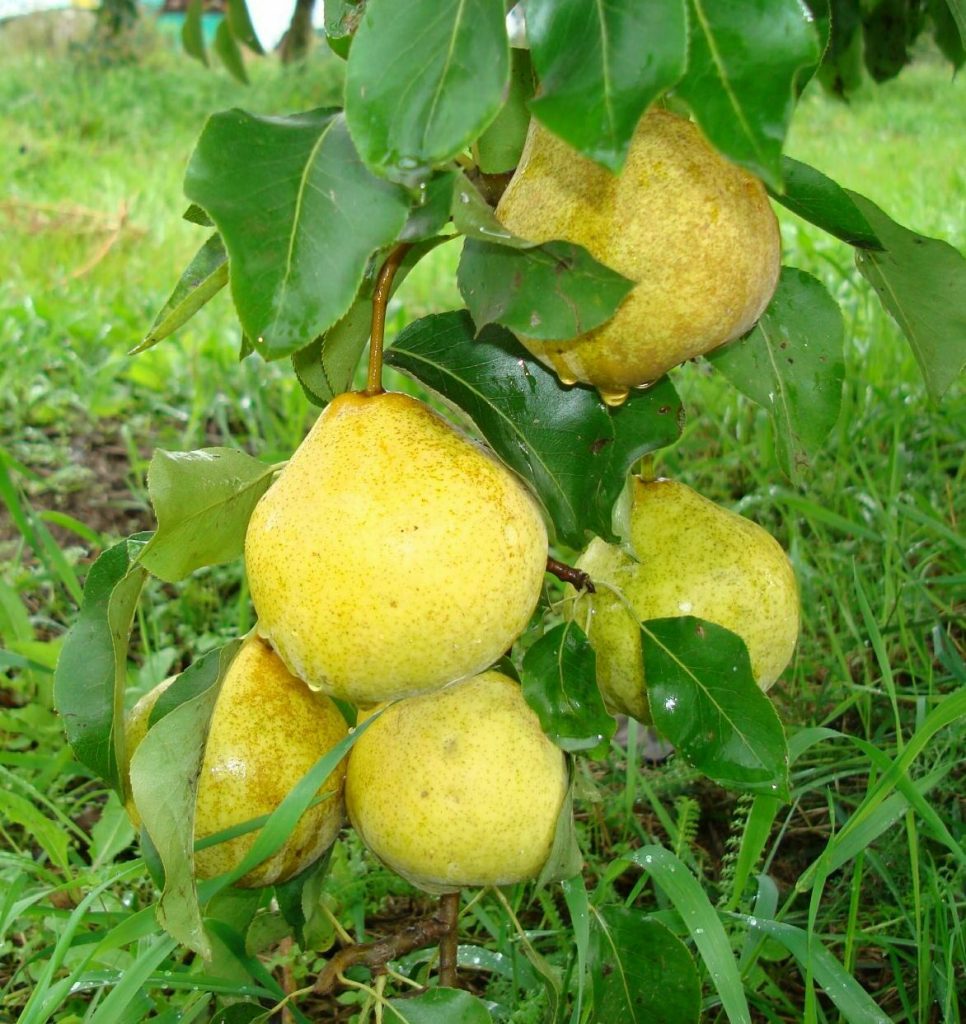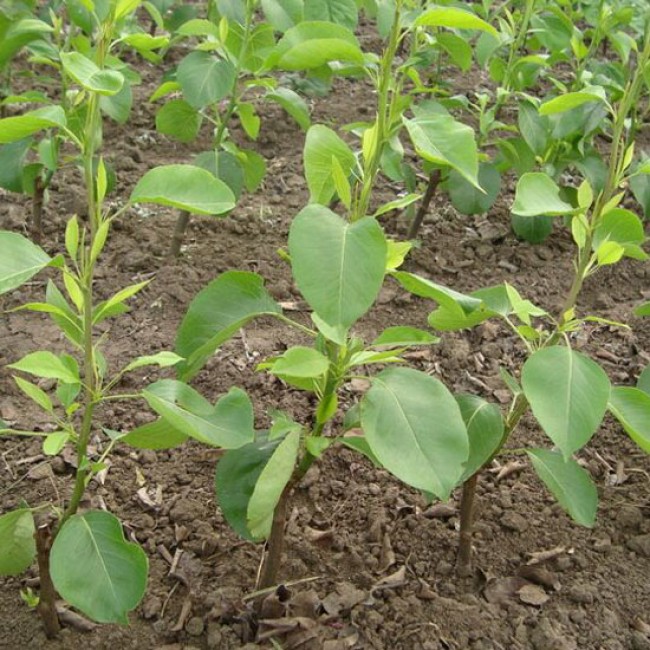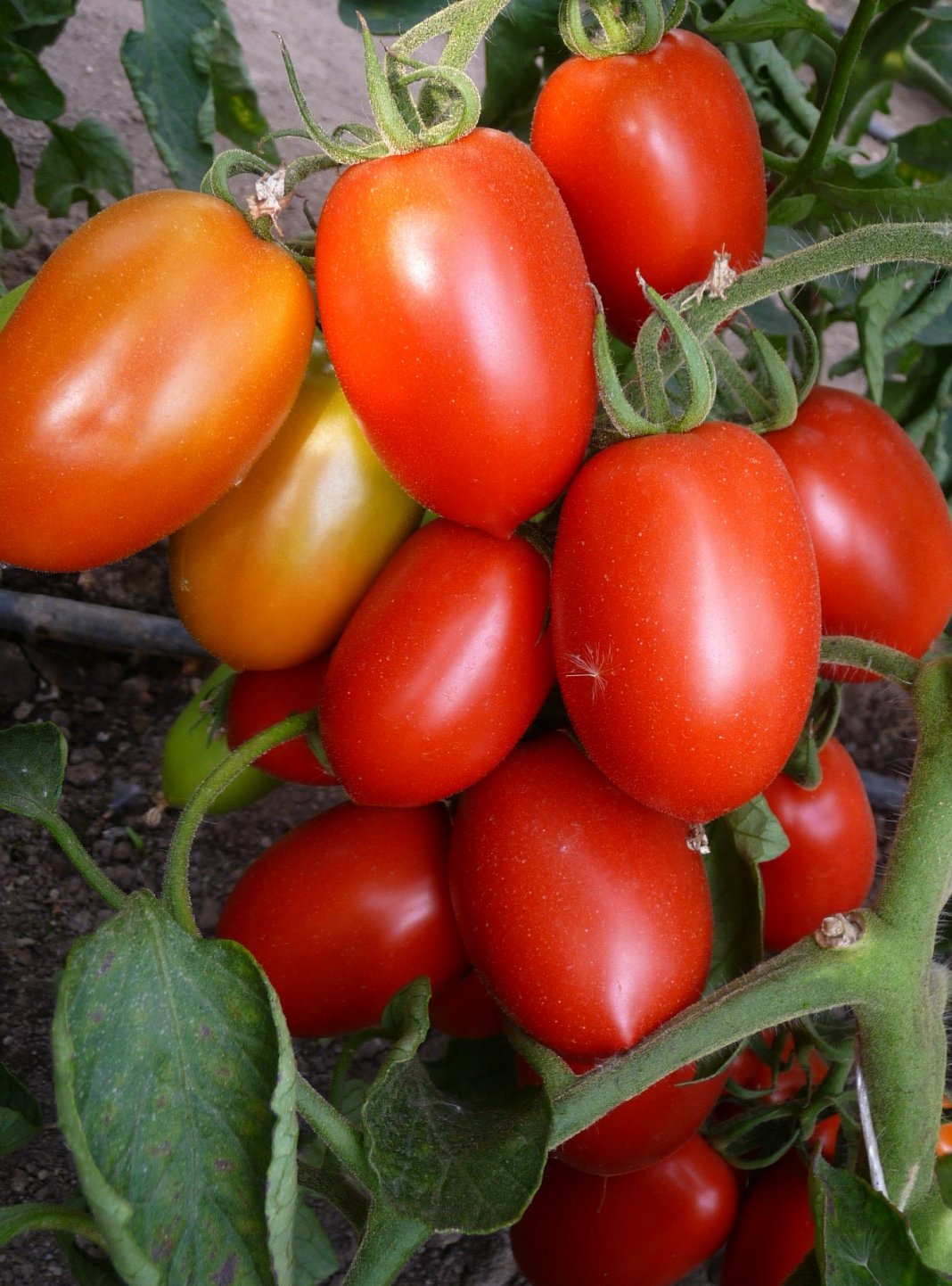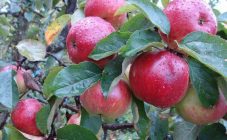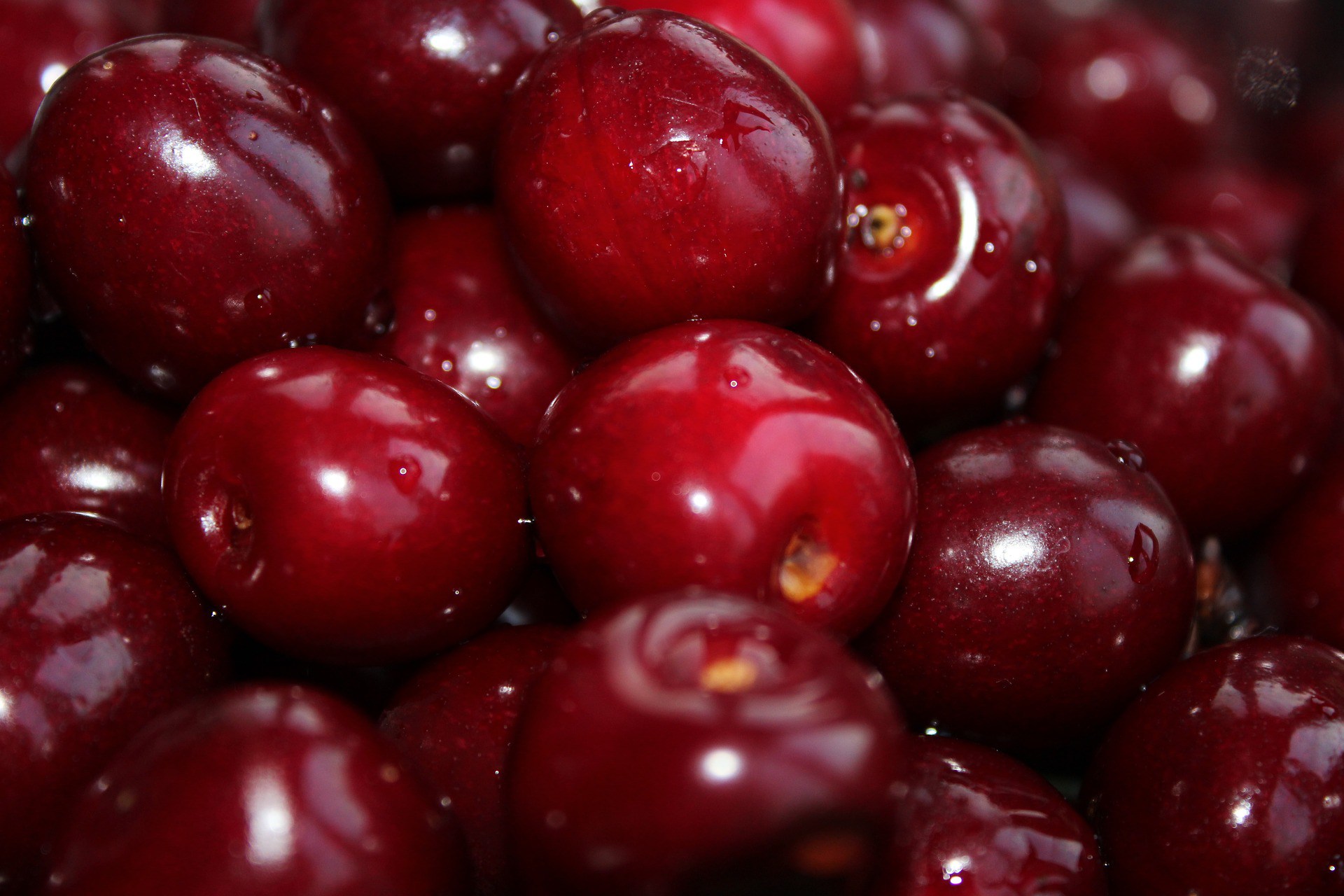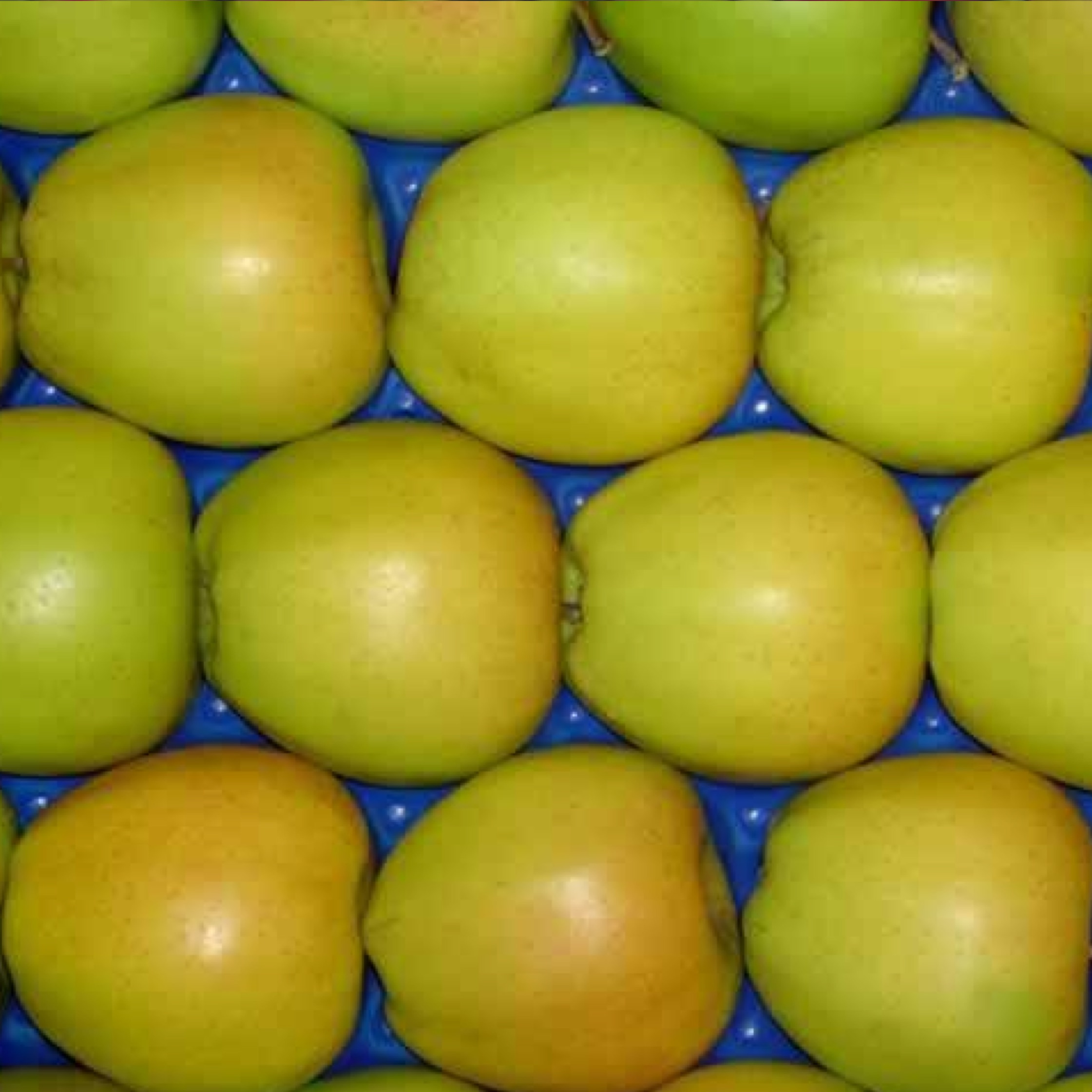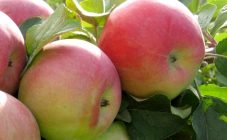Content:
Among the pears grown in Russia, a special place is occupied by varieties bred in neighboring countries. New genotypes, obtained in weather and climatic conditions similar to those in Russia, enrich the assortment, are used in breeding, and are grown in private subsidiary farms and large holdings. One of these varieties is Belorusskaya Late.
Brief description of the culture, history of the variety
These are woody or shrubby plants from the Pink family, which have many varieties. The fruit is usually elongated, expanding downward.
Pear Belorusskaya late was bred on the basis of the Belarusian Research Institute of Fruit Growing from seeds obtained from free pollination of the French variety Dobra Luisa. This is the fruit of the work of breeders Mikhnevich, Kovalenko and Myalik. Since 1989, the variety has been in the State Register of Breeding Achievements of Belarus, and since 2002 - in a similar Russian register. In our country, the variety is allowed for cultivation in the Central and Northwestern regions.
The tree is low, with a spherical crown. Large skeletal branches extend from the trunk at almost right angles. The geniculate shoots are slightly thickened, characterized by a light brown color with slight pubescence, round at the cut. There are many lentils on the stem bark.
The buds are small, conical in shape, without pubescence, bent from the stems at a slight angle. Fruiting - on complex and simple ringlets. The inflorescences of the variety are white, petals are oval. The fruits ripen in the 4th year of plant growth. Cleaning is usually done in the last days of September.
The weight of the fruits is average, usually does not exceed 110-120 g. All fruits on the tree are approximately the same size, have a wide pear-shaped shape.
Pears have a rough, light skin with many light brown specks. At the time of removal from the tree, the fruits are still green, but after a few days they ripen and acquire a yellow-orange color. Fruits are juicy, with medium density white pulp. The taste score varies from 4.2 to 4.4 points. The taste of the fruit is sweet, there is a slight sourness. The peduncle is straight, shortened.
When the fruits are picked at the end of September, they can be stored until February without significant loss of quality and taste. One of the characteristics of the variety is self-fertility, however, for better setting, it is necessary to place other pollinators nearby, the most suitable of which are:
- Bere Loshitskaya;
- Beauty Chernenko;
- Oily, etc.
Agrotechnics
The optimal period for planting Belorusskaya Sweet is the first two weeks after the complete snow cover in spring. Autumn planting is also practiced in the period after the completion of leaf fall and before the first frost.
Belorussian late makes certain requirements for cultivation conditions. She needs access to sunlight, fertile loose soil that is easily permeable to moisture and air. Heavy clay and sandy soils with deficient nutrients are not suitable for this variety. Water should not stagnate in the ground.
When buying seedlings, you need to pay attention to their appearance. The stems should be strong and resilient, the crown should be compacted, the bark should be even and smooth, without thorns. The foliage should be vibrant and healthy and the roots moisturized. If the seedling has traces of disease, damage by harmful insects or mechanical severe damage, it is better not to buy it.
For a seedling in the garden, dig a hole 80 cm deep and 1 m in diameter. The soil extracted from there is mixed with 2 buckets of cow dung and sand. To the nutrient mixture add 20 g of phosphorus fertilizers and 30 g of potash.
Before planting a seedling, it must be soaked for 3 hours in clean water to saturate the roots with moisture. After the specified time has elapsed, it is installed in the hole and the roots are straightened so that they do not bend, do not overlap each other and sit freely. Then a wooden peg is driven into the hole with the point down. The hole with the seedling is covered with nutritious soil mixture and tamped so that the root collar is 6-7 cm higher than the soil level. After that, at least three buckets of water are poured into the hole. When it is slightly absorbed, the soil in the near-trunk sector is immediately mulched with earth in order to retain moisture for a longer time. After that, the sapling is tied to a peg with a twine twisted in an eight.
Top dressing and watering
For the first 2-3 years of cultivation, Belorussian late does not feel the need for fertilizers. She has enough of those nutrients that were introduced during planting. After these years, it is necessary to switch to regular feeding.
In the spring, when the tree is actively blooming, the near-stem sector is treated with a solution of nitrate 1:50 (30 g of fertilizer per square meter) and a urea solution (about 100 g per 5 L of water). At the end of flowering, 30 liters of nitroammofoska solution is poured under the tree, which is diluted at a concentration of 1: 200.
At the end of September, 1 tablespoon of potassium chloride and 2 tablespoons of superphosphate are diluted in 10 liters of water. The funds received are enough to process 1 square meter of soil. Wood ash is embedded in the soil to a depth of 10 cm. About 140 g of substance should be released per 1 m2.
According to the description of the late Belorussian pear, it is quite drought-resistant. However, during dry periods, it requires abundant irrigation. At least 70 liters of water is poured under each tree every three to four days.
Tree pruning
From the first years, it is necessary to correctly form its crown, which will significantly increase the volume of the crop and its quality. The first time pruning is carried out during planting. In this case, the central conductive branch of the seedling is shortened by a quarter.
A small number of skeletal shoots must be preserved on the tree. For this purpose, most of the side ones are cut, leaving only 4-5 of the most powerful and large ones. They are cut into 4-5 buds.
In subsequent years, it is necessary to prune in the spring and fall. Many stems of this variety grow upward and into the crown. This leads to its thickening, as a result of which the plant is less illuminated by the sun and less aired. This leads to a decrease in yield, a drop in the quality of fruits, and the development of diseases. In this regard, remove all thickening stems.
Preparing the tree for winter
Belorussian late is characterized by a high level of winter hardiness and frost resistance. Nevertheless, with insufficient care in some years, the plantations risk freezing and death. This is especially true for young seedlings in the first few years of their life.
Plants should be covered in late autumn. For this purpose, burlap and fabrics are used, but the best effect is achieved when using a special dense white covering material, which can be purchased in garden stores.It is fixed on a tree with pieces of twine.
It is recommended to evenly scatter a layer of sawdust over the surface of the near-trunk sector. They protect the upper part of the root system well from freezing.
Plant protection
One of the significant disadvantages of the Belorussian late is its insufficient resistance to scab. For control and prevention, various fungicides are used, but the most common is three-time treatment of plantations with Bordeaux liquid:
- 3% solution before bud break;
- 1% solution during budding and at the end of flowering.
When the first symptoms of moniliosis are found on a tree, it is necessary to cut off and burn all damaged stems and fruits of the pear as soon as possible. This must be done in order to stop the further spread of infection in the garden. The tree is then treated with Streptomycin or any other suitable antibiotic. To strengthen the immunity of the tree, you should dilute 4 drops of Zircon and Citovit in a liter container with water and add a small amount of Healthy Garden there. Plants are treated with the resulting solution every one and a half weeks.
For pest control, appropriate insecticides are most often used, following the instructions for use. The greatest harm to the Belarusian late can be caused by the following harmful insects:
- hawthorn;
- pear moth;
- weevil beetle;
- pear sawfly;
- aphid.
In the first years of cultivation, it is recommended to remove all weeds from the trunk circle. In this case, you should not dig up the soil. It is recommended to use herbicides for weed control, but they must be used with care so that the drug does not fall on the foliage surface.
The soil around the plants can be sown with red fescue, clover, or meadow bluegrass. These plants will prevent the growth of weeds and provide the soil with nutrients. After mowing, they can be used as mulching material.
Harvesting and storage
Harvesting of fruits begins 2-3 weeks before the onset of the average date of full ripening in the region. The collection is carried out manually, since the variety is poorly suitable for mechanized harvesting. It is necessary to carefully lay the fruits in the container, trying not to injure them and not to tear off the stalk.
The fruits are stored in special containers or boxes made of wood, which are installed in ventilated areas. The air temperature in the storage should range from +2 to + 9C. Do not stack fruits in more than two layers. If possible, roll each pear into a separate sheet of newspaper.
Advantages and disadvantages of the variety
The positive qualities of Belorusskaya late in comparison with other varieties are:
- early maturity;
- long preservation of fruits;
- winter hardiness;
- increased productivity.
Among the disadvantages are:
- frequency in fruiting;
- small fruit size with high yields;
- tendency to thicken the crown;
- low resistance to pests.
Belorusskaya late is considered one of the most promising pear varieties. With a sufficient agrotechnical level, you can get a good harvest.
